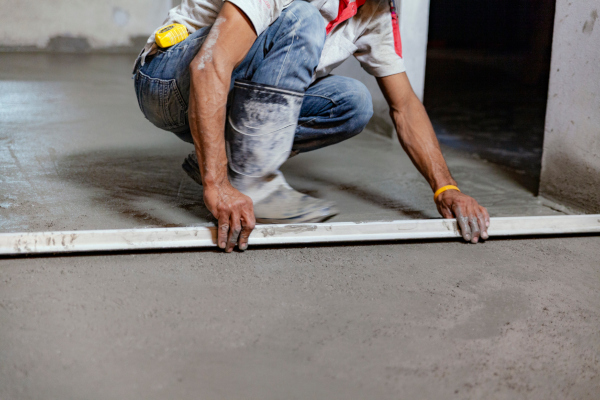Some people think that concrete floors are more likely to evoke industrial spaces, rather than homes. In fact, according to the International Association of Home Inspectors in their history of concrete, the first homes to use concrete were in Yugoslavia in 5600 BC. Home-building and construction techniques have changed a lot since then, but concrete is still an amazing option for home flooring.
Due to the many finishes, colors, and patterns, concrete floors offer a chameleon-like quality. Do you want your living room floor to look like polished marble? Or your kitchen floor to look like old, reclaimed wood, without the worry of wood in a highly trafficked area? Voilà! Flat polished surface, or stamped and patterned, you can create the illusion of many materials and finishes with the skills of a seasoned concrete specialist.
Concrete is very heavy and won’t work in every home.
Before you begin imagining how great your present home would look with concrete floors, you’ll want to know if the infrastructure of your home will support concrete. A structural engineer or architect can tell you if your home will handle it, or if modifications would be needed.
Your home may be built on a concrete slab. If so, the concrete already exists beneath your carpeted, tiled or wood-covered surfaces. Stripping those coverings off and smoothing, staining, polishing and sealing the concrete beneath can give you stunning results. Concrete can be used on second stories as well, if your support beams are adequate.
If you are building, or adding on to your home, you may want to consider cement flooring right from the start.
One of the many benefits of concrete flooring is its longevity. The surface is durable and scratch resistant. Regular damp mopping can keep the surface looking beautiful. If a good sealer followed by a coat of floor wax or finish is applied, that will ensure your floor remains looking great for many years to come.
Some people like to tackle home improvement projects themselves. Transforming a concrete slab subfloor or pouring and leveling a new concrete floor is probably best handled by professionals specializing in concrete flooring.
Tile, slate, stone and concrete flooring can cause sound to feel amplified or echoey. This can be mitigated by adding area rugs and soft, sound-absorbing furniture, like fabric-covered couches and chairs. Area and throw rugs can also help to soften those surfaces because standing on a hard surface for long periods of time can be difficult.
Some people express concern about the fact that tile, stone and concrete flooring is cold to the touch. During the hot summer months in Marin and Sonoma, that might prove to be a welcome idea. However, during our cold, damp winters a cold floor is not as inviting. Using electric radiant heat with an underlayment that insulates will make the home warm in the winter and cool in the summer. It is the best of all the options.
If you are considering a remodeling project that could include new concrete flooring or want to discuss about another aspect of remodeling, contact us today!




